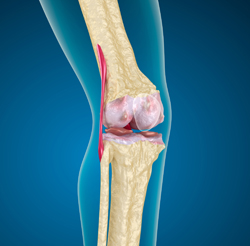Predicting and preventing cartilage damage
Osteoarthritis is characterised by a degeneration of joints, including the articulate (joint-related) cartilage, which increases friction and makes movement difficult and painful. Scientists initiated the EU-funded project CARTILAGE LOADING to determine the properties that prevent articular cartilage from undergoing mechanical damage. Until now, experimental loading paradigms did not accurately reproduce the frequencies associated with realistic scenarios such as gait patterns during walking and impulsive heel strike rates associated with early onset of lower-limb osteoarthritis. A technique previously developed by the project leaders and based on dynamical mechanical analysis (DMA) enables the determination of cartilage properties during such conditions. In particular, DMA enables the measurement of energy stored by the cartilage for subsequent recoil and its viscous dissipation of energy. The ratio of the two provides a predictor of fracture since fracture occurs as a result of excess energy storage. When combined with a sweep of various frequencies, how the ratio changes as a function of loading frequency can be determined. Scientists employed DMA to study the viscoelastic properties of cartilage from knee and hip joints. They found that the ratio of energy storage to dissipation increased with frequency as did the failure rate, providing evidence that excess energy storage in the cartilage predisposes it to failure. Interestingly, the effect was independent of load, highlighting the critically important role of the frequency of loading in inducing mechanical damage to cartilage. Further, gross morphological changes in cartilage thickness were significantly correlated with measurements of storage and loading. This result suggests that imaging techniques such as magnetic resonance imaging (MRI) could enable the non-invasive assessment of susceptibility to cartilage damage. CARTILAGE LOADING established a direct relationship between frequency of loading and cartilage damage that was independent of load amount. In particular, high-rate impact can predispose cartilage to degeneration. The project also established an important link between energy storage and dissipation and cartilage thickness, supporting a role for imaging techniques in early, non-invasive prediction of susceptibility to damage.







